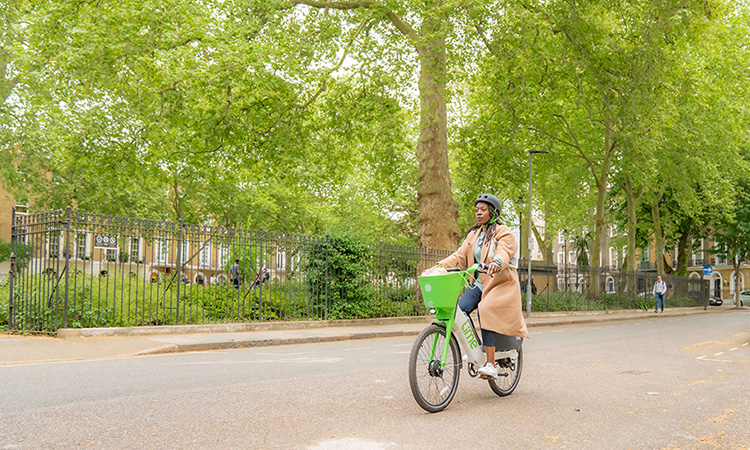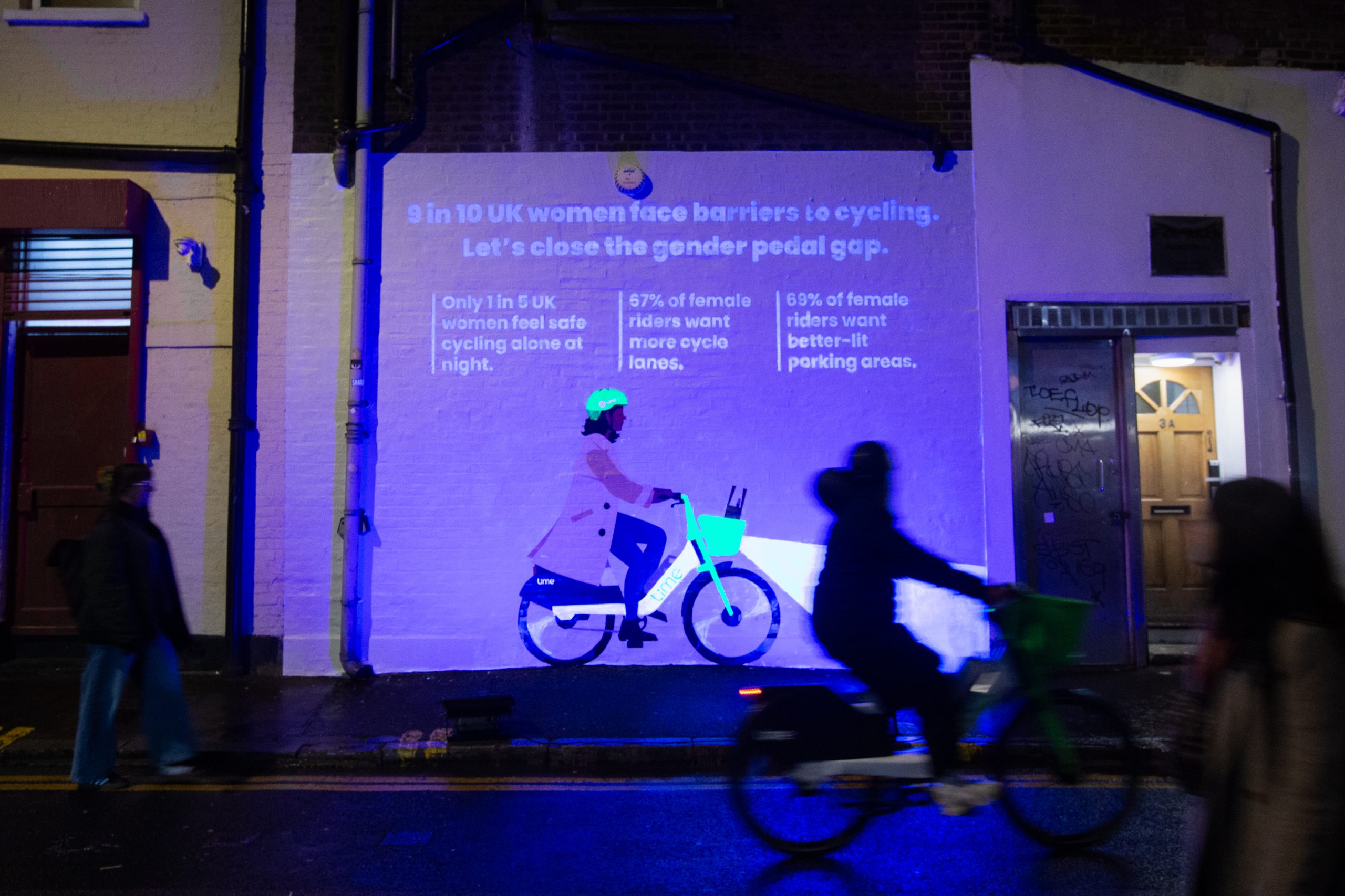It’s time we closed the gender ‘pedal gap’
- Like
- Digg
- Del
- Tumblr
- VKontakte
- Buffer
- Love This
- Odnoklassniki
- Meneame
- Blogger
- Amazon
- Yahoo Mail
- Gmail
- AOL
- Newsvine
- HackerNews
- Evernote
- MySpace
- Mail.ru
- Viadeo
- Line
- Comments
- Yummly
- SMS
- Viber
- Telegram
- Subscribe
- Skype
- Facebook Messenger
- Kakao
- LiveJournal
- Yammer
- Edgar
- Fintel
- Mix
- Instapaper
- Copy Link
Posted: 4 January 2024 | Alice Pleasant - Lime | No comments yet
After Lime’s latest report revealed that almost three quarters of UK women never cycle due to a range of barriers, the micro-mobility company set out to find solutions that would help to close the gender ‘pedal gap’. For Intelligent Transport, Alice Pleasant, Public Affairs Manager at Lime, shares her exclusive insight into the impact of lack of confidence and insufficient infrastructure on stopping women from choosing to cycle more often, and discusses how removing these barriers will get women moving in a safer and more sustainable way.


Credit: Lime
Men cycle more than women – this is a sad, but unfortunately well-known reality in the UK. In fact, almost three quarters (71%) of women never cycle in comparison to 54% of men, according to Sustrans’ Cycling and Walking Index (2021). This gap is despite cycling offering numerous proven benefits; from health and fitness, to convenience and speed, as well as being a green and enjoyable transport mode.
So then, we should ask: why are women accessing cycling less than men? And, more importantly, what should we be doing to get more women on two wheels?
Our recent report: ‘Tackling the Gender Pedal Gap‘ set out to answer this, as well as offer solutions. It found that nine in 10 women face barriers to cycling, which fell into two main camps: a lack of confidence and insufficient infrastructure – both of which were exacerbated even more when cycling at night.
Making cycling a societal norm
Getting on a bike can feel daunting, particularly if you live in a busy city. The data showed that almost double the amount of women (41%) felt nervous about cycling in traffic compared to men (21%), and cited a lack of experience or confidence as a reason not to ride (27% versus 14%). This experience worsened at night, with only one in five (19%) women feeling safe at night when riding.
A concerted effort to increase cycling proficiency amongst women at different ages is one way to tackle this. For example, introducing accessible cycling proficiency refreshers in secondary schools would teach vital skills, but, most importantly, it would increase confidence – confidence to get out on a bike, and enjoy all of the rewards that it brings. While cycling proficiency currently exists in primary schools, refreshers can help to keep putting those skills to practise.
It is also important that this education extends beyond just the cycling community. The onus is on all road users to create an inclusive environment. We know that cyclists have cited other, more confident cyclists and cars as major hurdles to riding, so education to show the female perspective to create greater understanding of this issue is key. This was an important goal of our recent campaign.


Credit: Lime/ Jamie Henderson
Improving infrastructure
The report showed that infrastructure was another significant barrier for women accessing cycling. A third of women (31%) were concerned by the lack of dedicated cycle lanes, and this poor infrastructure also became a more prominent issue in the dark, with half of female riders (46%) highlighting poorly lit roads as a barrier to cycling alone at night, as well as cycle routes being located in isolated and quiet areas (41%).
While strides have been made to improve cycling infrastructure in towns and cities, it is clear that more still needs to be done to encourage women to cycle. A staggering 68% of female riders would feel safer cycling if there were more parking hubs near stations and public transport. Meanwhile, 67% of women want more dedicated cycle lanes, and 62% would like to see parking hubs near their homes or final destination to avoid additional walking in the dark.
By improving infrastructure around existing transport hubs, we can reduce the need for women to have to walk far to access transport options close to their homes or final destinations. This could also empower women to cycle more with the knowledge that they have a bike waiting for them for the next stage of their journey.
Operators such as Lime also have a role to play in helping to progress these solutions. We can provide data on popular routes for cyclists, and the most utilised end-of-ride locations to local authorities. This can help to inform efforts to improve lighting in these areas, as well as install well lit parking bays in them with the goal to give women peace of mind that routes and parking bay locations won’t be dark and isolated.
Closing the gap
While there is a clear gender ‘pedal gap’ that exists, the good news is that, when we look at women who cycle regularly – including at night – they experience plenty of benefits. Our study showed that, of 1 in 5 women (19%) that already choose to cycle at night, half (50%) find riding a bike the fastest way to travel through poorly lit or quiet areas compared to walking, and a third (33%) believe that it eliminates the long wait times of other transport, such as taxis or buses.
This is supported by the fact that over half of women who cycle agree that shared e-bikes and e-scooters offer a good alternative at night when public transport is closed, and 67% see it as a cheaper option in comparison to ride-hailing.
But, the only way that we can help more women to access these benefits is by breaking down the initial barriers to entry that still exist for some women. While these changes will not be implemented overnight, it is essential that we take a collaborative approach with government, local authorities and operators such as Lime to truly spark a movement. It is only by working together that we will start to close the gender ‘pedal gap’.


Related topics
Micro-mobility, Passenger Experience, Sustainable Urban Transport, Vehicle & Passenger Safety
Related modes
Bikes & Scooters
Related countries
United Kingdom
Related organisations
Lime
Related people
Alice Pleasant







